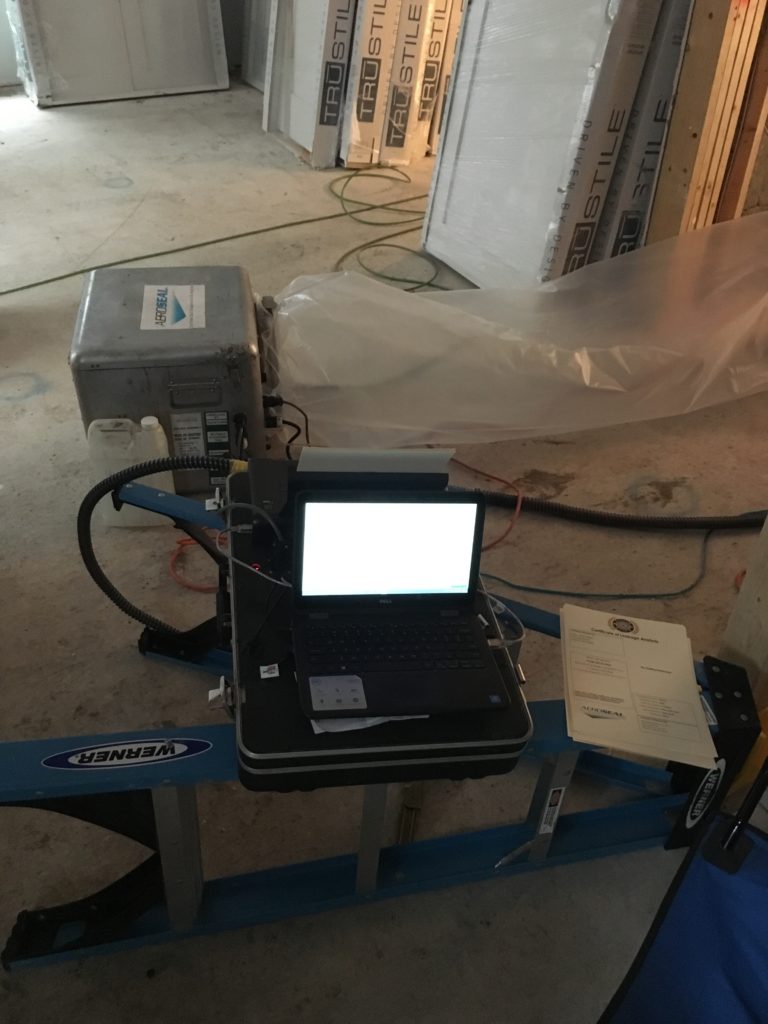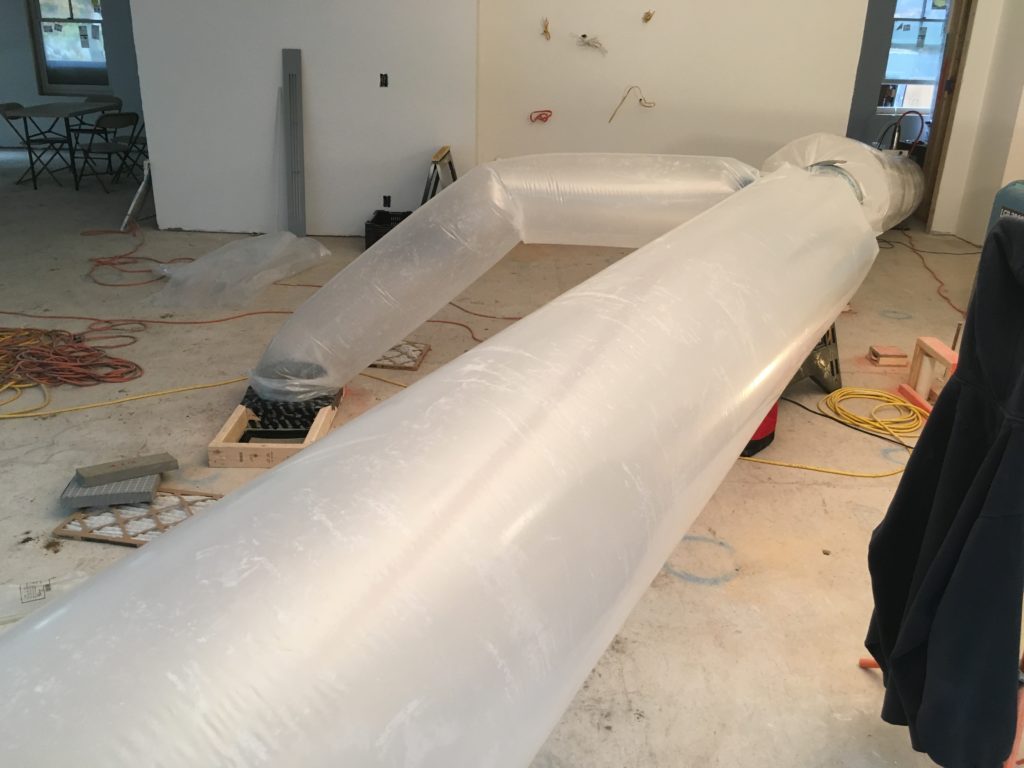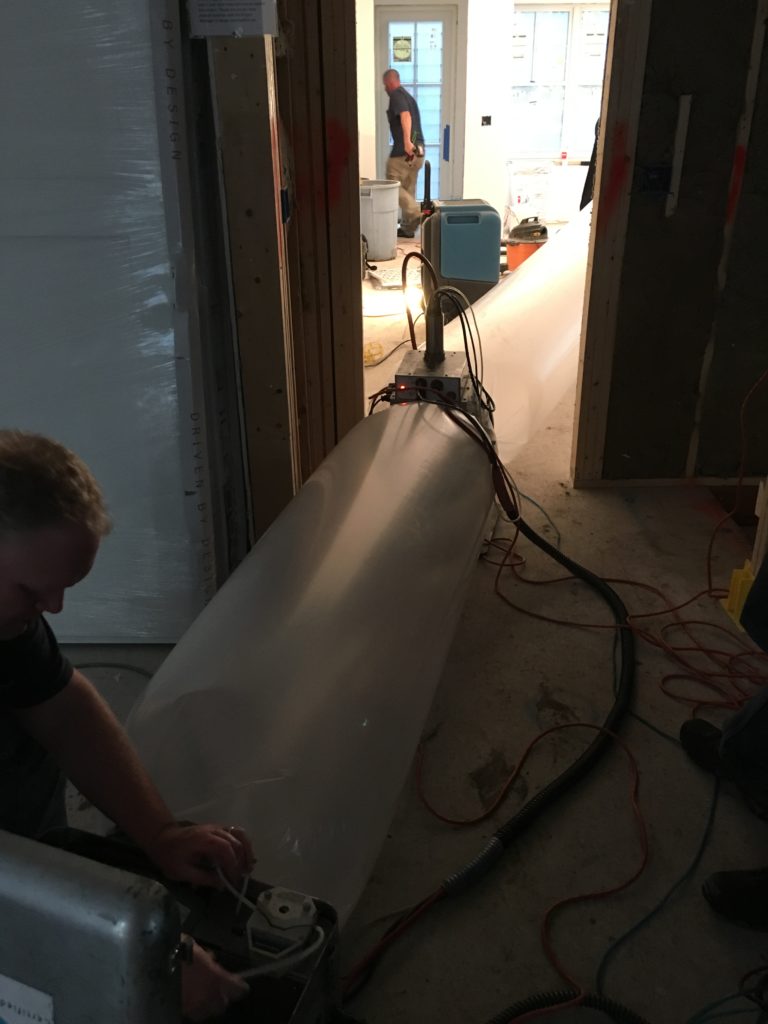Our HVAC installer, Boucher Energy Systems, was out Friday to commence duct sealing. The Energy Star rating system specifies a maximum permissible amount of duct leakage from our ventilation ducts. Even though the entire duct system is located within the building envelope (which means air leaking from ducts will stay within the house), minimizing duct leakage is valuable so that each room receives its design airflow, and it’s just good building practice. Boucher had already assembled a tight duct system, including low-VOC mastics and insulation, but Friday they brought out their Aeroseal system to further tighten the system.
Aeroseal works the same way platelets work in our blood to seal small cuts. In our bodies, when you get a cut, the platelets in the blood form a “clot” at the wound and help stop the flow of blood. In a ventilation system, the end of each duct is sealed off and then a stream of air is blown into the duct. A mist of small sticky polymer particles (“the platelets”) is injected into the airflow, and the polymer is carried throughout the duct. Every place air is leaking out of the duct through a hole, the polymer adheres to the duct surface, then more particles stick to those, until soon the hole is sealed with a coating of polymer that hardens in place. It’s a great system and the computer analysis reported that the system reduced air leakage (from already tight ducts) by another 60-80% in most cases.





